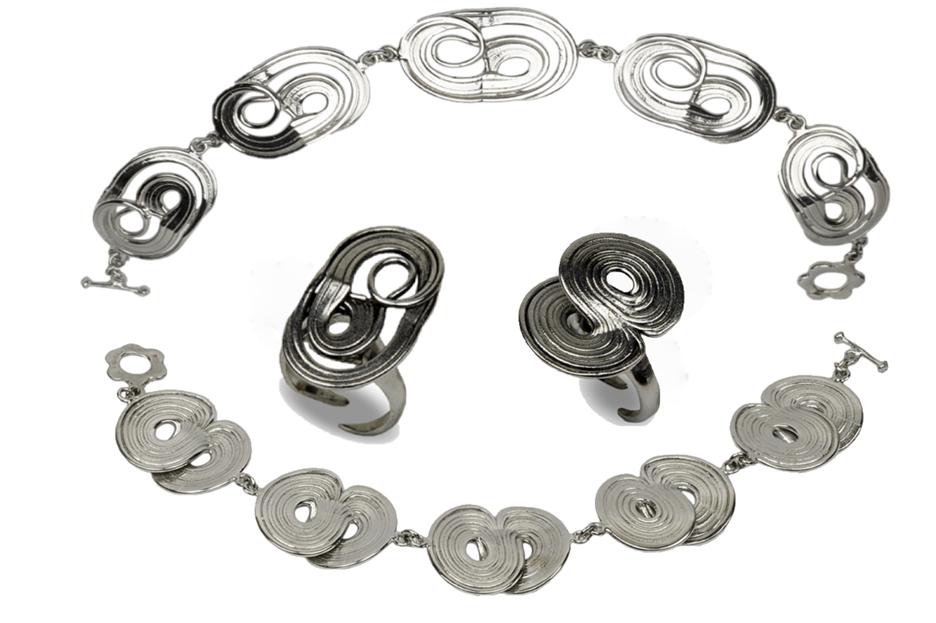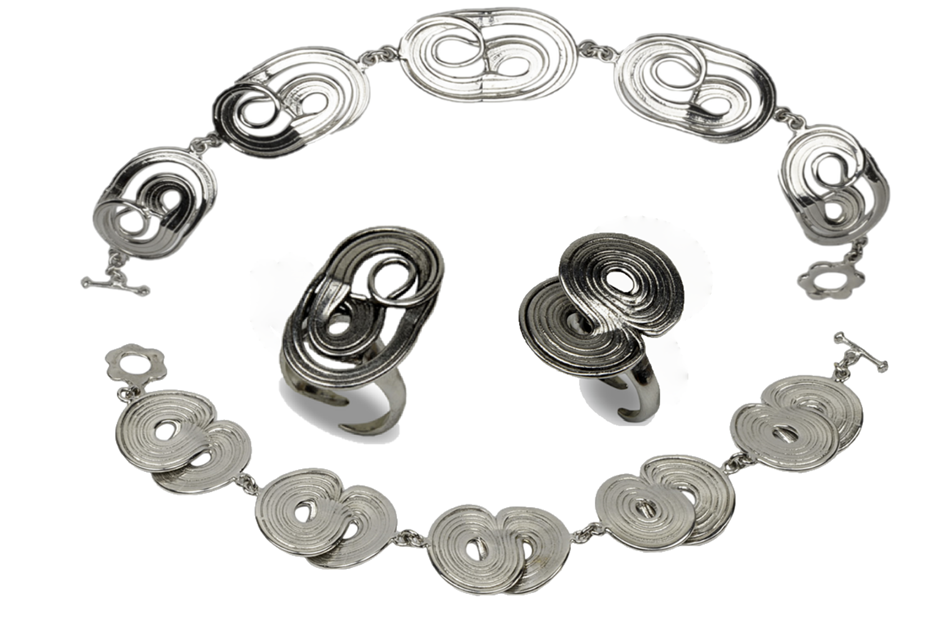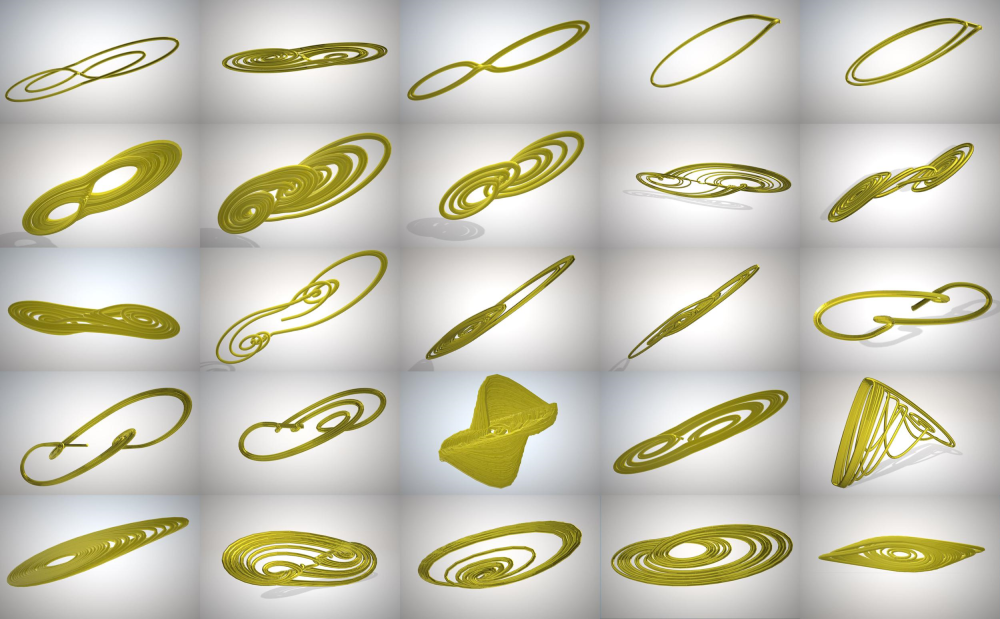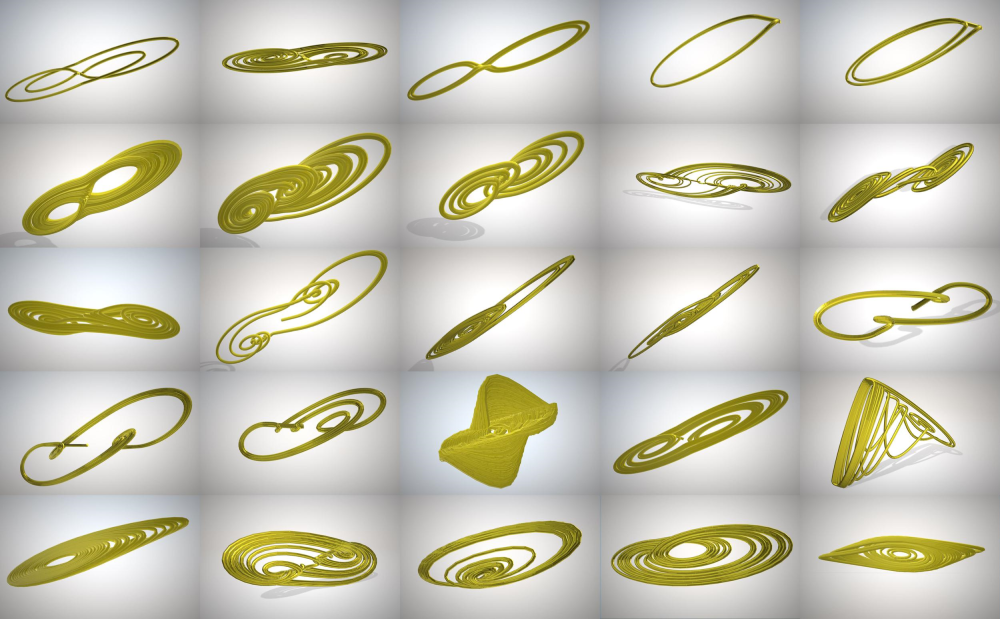Fashioning Beauty from Chaos
A plume of smoke and the churning of ocean waves are governed by the capricious nature of chaos. Typically, chaotic systems are in constant frantic motion, but Eleonora Bilotta and her team have found a way to freeze chaos in time by fabricating jewelry derived from a mathematical description of chaos. This type of chaotic mapping has many practical roles, including improving computer models for weather forecasts and designing neural networks, but Bilotta—an interdisciplinary psychology professor at the University of Calabria in Italy—hopes that nonexperts will see something beautiful in the swirling forms of chaos-inspired jewelry.
At its heart, chaos theory is the study of systems, such as weather patterns and financial markets, that are incredibly sensitive to initial conditions. In 1972 the founder of modern chaos theory, Edward Lorenz, famously compared this seemingly unpredictable response to the effect a butterfly’s wings might have on a distant tornado. In other words, a small change to a system can have a huge, unintended impact.
While a chaotic system may look unpredictable, its behavior can often be described by a “strange attractor,” which is a complicated set of points that delineates how the system evolves in phase space. Strange attractors often look like folded ribbons, where the threads are made up of many different evolutionary paths.
Bilotta first developed a fascination with chaos through its role in modeling human behavior, such as emotional regulation and interpersonal relationships. But her interest hit a turning point in 2005 when Leon Chua, an influential chaos expert and professor emeritus of electrical engineering at the University of California, Berkeley, invited her and her colleagues to compose music based on his work with strange attractors.
“From the analysis of the attractors that existed at that time, we realized that by exploring the parameter space of these systems, it was possible to find many [other attractors],” Bilotta says. “This allowed us to develop a first set of tools and also to explore the space of chaos.” In a new paper, Bilotta and her colleagues describe their process for bringing the motion of chaotic systems from the virtual to the physical world using 3D printing and metal work [1].
The first system that the team looked at was Chua’s circuit, named after a tabletop laboratory experiment that Chua invented in 1983 using off-the-shelf components like capacitors as well as a specialized diode. When turned on, the simple device exhibits chaos in the form of nonperiodic oscillations in the current. Mapping the current with respect to the voltage reveals a wide range of strange attractors that depend on the circuit’s parameters.
In their 20 years of studying chaos, Bilotta says that she and her team have discovered over 1000 unique attractors for Chua’s circuit. The variety of these attractors was part of the inspiration behind their new chaotic design work. By studying the shape of these attractors, they have developed a new approach to generating unique shapes using computer modeling, which Bilotta believes can bring the beauty of chaos to a wider audience.
However, the process of translating a virtual, mathematical object to a tangible, 3D object is easier said than done, Bilotta says. Chaotic attractors have a fractal nature, meaning they have intricate details that show up when you zoom to smaller length scales. The mathematical curves can also come extremely close to overlapping in a way that would be difficult to reproduce in a 3D model.
To overcome these obstacles, the team had to make a few compromises when rendering the attractors to be printed, including simplifying their physical representation and smoothing over some of the details. Using design software, the team created computer models of the pared-down attractors, adjusting certain parameters to make them more visually interesting. Once a design was finalized, the researchers used 3D printing to create the shape in resin and then used this mold to cast the jewelry. In addition to creating models based on Chua’s attractors, the team also modeled other well-known chaotic attractors, including Lorenz’s butterfly.
Bilotta believes that these computer models can offer a new avenue for researchers to explore the properties of these attractors. She also hopes that students and nonexperts will be inspired by the jewelry to learn more about the concepts behind the art. “The beauty of chaos lies in the exploration of mathematical and philosophical ideas about the nature of the world and the infinite possibilities that exist within it,” Bilotta says.
To continue their work, Bilotta and colleagues plan to investigate how artificial intelligence can be implemented in their modeling process to uncover new, unexpected chaotic attractors. They also hope to bring these pieces of jewelry to art and science museums, where people could touch these strangely attractive creations—and perhaps take one of them home. “This would not only showcase our work but also inspire and educate the public on the possibilities of this innovative field,” Bilotta says.
–Sarah Wells
Sarah Wells is an independent science journalist based outside of Washington, DC.
References
- F. Bertacchini et al., “Jewels from chaos: A fascinating journey from abstract forms to physical objects,” Chaos 33, 013132 (2023).







